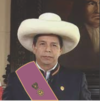New Alexandrian general election, 1708

|
This article or section is a work in progress. The information below may be incomplete, outdated, or subject to change. |
| ||||||||||||||||||||||||||||||||||||||||||||||||||||||||||||||||||||||||||||||||||||||||||||||||
| ||||||||||||||||||||||||||||||||||||||||||||||||||||||||||||||||||||||||||||||||||||||||||||||||
| ||||||||||||||||||||||||||||||||||||||||||||||||||||||||||||||||||||||||||||||||||||||||||||||||
The New Alexandrian general election of 1708 is the fourth general election of the Federation of Nouvelle Alexandrie after its formation in 1685 AN. The 1708 general election was held from 13.XI.1708 AN to 15.XV.1708 AN, in line with the Proclamation of Punta Santiago and the laws of Nouvelle Alexandrie. The next general election was originally scheduled for 1709 AN, but the failure of the vote of confidence of the government of Jose Miguel Martin in the Cortes Federales. The 1708 election saw 89,296,813 votes cast, a turnout rate of 52.3%. This registered as one of the lowest turnout levels of any general election in the history of the Federation.
Opinion polls had consistently shown the Federal Humanist Party leading the polls over the Social Democratic & Liberal Alliance (SDLA). The Social Democratic & Liberal Alliance dealt with several changes of leadership after the resignation of Premier Julio Delgado due to health issues. Vice-Premier Itzar Franco, the first woman Premier of the Federation, succeeded Julia Delgado. She resigned later the same year she was appointed and confirmed by the Cortes Federales, 1706 AN. Jose Miguel Martin succeeded Franco as leader and Premier. The successive changes in leadership weakened the coalition the Social Democratic & Liberal Alliance and the Moderate Caucus. Jose Miguel Martin lost the vote of confidence after the Moderate Caucus declined to support the coalition, forcing Martin to ask King Manco Capac I for a dissolution and a new election. He resigned as leader soon after, succeeded by Nadya Camille Albert.
The 1708 election also saw a large political realignment, with the small Moderate Caucus, originally a coalition of three independent Deputies elected in 1703 AN, growing to 10.0% of the popular vote and 63 seats in the Federal Assembly after it rebranded as the Federal Consensus Party of Nouvelle Alexandrie. The Federal Consensus benefitted from the weak position of the Social Democratic & Liberal Alliance after several leadership changes and stalled legislative agenda. A new libertarian party, the People's Liberty Congress secured 1.5% of the vote and 3 seats. The independent benches grew slightly, also benefiting from the steep polling losses of the Social Democratic & Liberal Alliance, to 19 seats and 3.6% of the vote. Two parties, the Freedom Party and the Digger's Society were dissolved and did not field candidates in the election, due to inactivity and campaign finance corruption charges.
Background
The New Alexandrian general election of 1708 was called by King Manco Capac I, at the request of caretaker Premier Jose Miguel Martin, after Martin lost his government's vote of confidence in the Federal Assembly by a narrow vote. The constant leadership changes had infuriated Martin's small but powerful coalition partner, the Moderate Caucus. Led by Yuri Allcca Canchasto, who had served as caretaker Premier briefly until Martin rose to the role, Canchasto instructed his caucus and other independents in the Federal Assembly to vote against the government. The SDLA-Moderate coalition government cobbled together by Julio Delgado and Yuri Allcca Canchasto in the "Spirit of 1703" fell, 310-309.
The Federal Humanist Party capitalized on the constant leadership changes and the slow response of the SDLA-Moderate coalition government to mounting economic difficulties, the Great Vanic Revolt, and other political challenges. After the resignation of Jose Miguel Martin from the leadership of the SDLA, the party's chief executive committee named Nadya Camille Albert as interim leader. She was later confirmed as the next leader of the party at the party's first convention since the dissolution of the third Federal Assembly.
In the lead-up to the general election, two political parties missed important deadlines to file public fundraising reports and a renewal of their electoral franchise (party registration): the Digger's Society and the Freedom Party. These party dissolved and did not participate in the general election by fielding candidates.
The collapse of two key small political parties led to a national political realignment. The Moderate Caucus rebranded as the Federal Consensus Party, trailing a radical centrist, left-of-center, progressive path heavily influenced by Aldricism and the Natopian Free Juice and Bagels Party.
Electoral system
Elections in Nouvelle Alexandrie are conducted region by region through proportional representation. Voters then choose from the parties on the ballot or have the option to vote for a slate of independent candidates. Seats are apportioned to each region using the Sainte-Laguë method, a highest quotient method for allocating seats in party-list proportional representation. In Nouvelle Alexandrie, the thresholds for a party to get seats in a region is set to 2%. This election would be the last election where seats would be apportioned in accordance to the census conducted in 1708 AN, just before the general election.
The 1708 election saw the seat count of the Federal Assembly increase for the first time since the formation of the Federation, from 619 seats to 637 seats. If one party obtains a majority of the seats, then the party is entitled to form the government, with its leader as President of the Government. If an election results n no party having a majority, there is a hung Cortes Federales, at which time the main options are the formation of a coalition of several parties or a minority government, in accordance with the law.
Voting eligibility
To vote in the general election, one had to be:
- legally registered to vote;
- a citizen of the Federation (at the time of the election);
- not legally excluded from voting as provided by New Alexandrian law.
Government figures report that 1,234,981 new voters were added to the rolls across the country in the weeks leading up to the general election.
Census of 1708 and redistricting
| Region | Seats (1703 AN) | Seats (1708 AN) | Change |
|---|---|---|---|
| Alduria | 145 | 153 | +8 |
| Wechua Nation | 137 | 142 | +5 |
| Santander | 91 | 94 | +3 |
| Valencia | 27 | 26 | -1 |
| Federal Capital District | 2 | 2 | 0 |
| North Lyrica | 60 | 60 | 0 |
| South Lyrica | 69 | 72 | +3 |
| Islas de la Libertad | 12 | 12 | 0 |
| New Luthoria | 17 | 17 | 0 |
| Isles of Caputia | 59 | 59 | 0 |
Opinion Polling
| Polling Firm |
MoE | Date | FHP | SDLA | MC | FCP | Ind. | PLC |
|---|---|---|---|---|---|---|---|---|
| IOP | ±4% | 1.II.1708 AN | 51.2% | 38.6% | 8.3% | XX | 1.9% | XX |
| IOP | ±4% | 12.X.1708 AN | 52% | 34% | XX | 9% | 3% | 2% |
| IOP | ±4% | 12.XII.1708 AN | 56.5% | 30.1% | XX | 10.2% | 1.9% | 1.3% |
Contesting Parties
The Digger's Society and the Freedom Party both lost their electoral franchise and legal registration after it failed to file for its renewal and failed to file legally required fundraising information and figures. The parties made no effort to field candidates or support any candidates during the general election.
The parties that contested the New Alexandrian general election were:
- the incumbent Social Democratic & Liberal Alliance of Nouvelle Alexandrie;
- the incumbent Federal Consensus Party (previously the Moderate Caucus (Nouvelle Alexandrie);
- the Federal Humanist Party;
- the People's Liberty Congress.
Federal Humanist Party Campaign
Social Democratic & Liberal Campaign
Federal Consensus Party Campaign
People's Liberty Congress Campaign
Candidates
Most candidates are representatives of a political party, which must be registered with the Federal Elections Commmission and maintain regular activity and participation in politics. Those who do not belong to one must use the label "Independent" or none.
In the 1708 AN election X,XXX candidates stood: XXX of them being independents, the rest representing one of four national political parties.
Results
National
| Political party | Leader | Candidates | Votes | Elected | Gain/loss | % of votes | % of seats | |
|---|---|---|---|---|---|---|---|---|
| Federal Humanist Party | Felipe de Almagro | 637 | 49,756,890 | 346 | ▲ 57 seats | 55.7% | 54.3% | |
| Social Democratic & Liberal Alliance | Nadya Camille Albert | 637 | 29,294,165 | 206 | ▼ 103 seats | 32.8% | 32.3% | |
| Federal Consensus Party | Yuri Allcca Canchasto | 637 | 8,898,041 | 63 | ▲ 60 | 10.0% | 9.8% | |
| People's Liberty Congress | Adriana Lopez Gautier | 637 | 1,347,717 | 3 | New party. | 1.5% | 0.4% | |
| Independent | 637 | 3,203,095 | 19 | ▲ 5 seats | 3.6% | 2.9% | ||
| Total | 3,185 | 89,296,813 | 637 | Turnout | 51.2% | |||
Regional
Alduria
|
Region of Alduria | |||
|---|---|---|---|
| Party | Votes | Vote % |
Deputies |
| Federal Humanist Party | 11,697,821 | 52.9% | 81 |
| Social Democratic & Liberal Alliance | 6,557,501 | 29.7% | 46 |
| Federal Consensus Party | 2,750,348 | 12.4% | 19 |
| Independent/Unaligned | 641,158 | 2.9% | 4 |
| People's Liberty Congress | 464,287 | 2.1% | 3 |
| Totals | 22,111,115 | 100.0% | 153 |
Wechua Nation
| Region of the Wechua Nation | |||
|---|---|---|---|
| Party | Votes | Vote % | Deputies |
| Federal Humanist Party | 10,235,667 | 49.9% | 72 |
| Social Democratic & Liberal Alliance | 7,209,113 | 35.1% | 51 |
| Federal Consensus Party | 1,794,578 | 8.7% | 13 |
| Independent/Unaligned | 923,982 | 4.5% | 6 |
| People's Liberty Congress | 369,593 | 1.8% | 0 |
| Totals | 20,532,933 | 100.0% | 142 |
Santander
| Region of Santander | |||
|---|---|---|---|
| Party | Votes | Vote % | Deputies |
| Federal Humanist Party | 8,500,080 | 62.1% | 59 |
| Social Democratic & Liberal Alliance | 3,314,101 | 24.2% | 23 |
| Federal Consensus Party | 875,733 | 6.4% | 6 |
| Independent/Unaligned | 848,366 | 6.2% | 6 |
| People's Liberty Congress | 225,613 | 1.1% | 0 |
| Totals | 13,688,797 | 100.0% | 94 |
Valencia
| Region of Valencia | |||
|---|---|---|---|
| Party | Votes | Vote % | Deputies |
| Federal Humanist Party | 1,790,481 | 45.9% | 12 |
| Social Democratic & Liberal Alliance | 1,599,969 | 41.0% | 11 |
| Federal Consensus Party | 427,121 | 10.9% | 3 |
| People's Liberty Congress | 57,113 | 1.5% | 0 |
| Independent/Unaligned | 28,556 | 0.7% | 0 |
| Totals | 3,903,240 | 100.0% | 26 |
Federal Capital District
| Federal Capital District | |||
|---|---|---|---|
| Party | Votes | Vote % | Deputies |
| Federal Humanist Party | 140,504 | 50.1% | 1 |
| Social Democratic & Liberal Alliance | 111,708 | 39.8% | 1 |
| Federal Consensus Party | 12,337 | 4.4% | 0 |
| Independent/Unaligned | 13,178 | 4.7% | 0 |
| People's Liberty Congress | 2,692 | 1.0% | 0 |
| Totals | 280,419 | 100.0% | 2 |
Isles of Caputia
| Region of the Isles of Caputia | |||
|---|---|---|---|
| Party | Votes | Vote % | Deputies |
| Federal Humanist Party | 5,094,511 | 59.5% | 35 |
| Social Democratic & Liberal Alliance | 2,725,011 | 31.8% | 19 |
| Federal Consensus Party | 402,627 | 4.7% | 3 |
| Independent/Unaligned | 308,395 | 3.6% | 2 |
| People's Liberty Congress | 34,266 | 0.4% | 0 |
| Totals | 8,564,810 | 100.0% | 59 |
North Lyrica
| Region of North Lyrica | |||
|---|---|---|---|
| Party | Votes | Vote % | Deputies |
| Federal Humanist Party | 5,083,096 | 58.4% | 36 |
| Federal Consensus Party | 1,837,681 | 21.1% | 13 |
| Social Democratic & Liberal Alliance | 1,595,836 | 18.3% | 11 |
| Independent/Unaligned | 156,030 | 1.8% | 0 |
| People's Liberty Congress | 26,005 | 0.3% | 0 |
| Totals | 8,698,648 | 100.0% | 60 |
South Lyrica
| Region of South Lyrica | |||
|---|---|---|---|
| Party | Votes | Vote % | Deputies |
| Federal Humanist Party | 5,234,109 | 49.9% | 37 |
| Social Democratic & Liberal Alliance | 4,325,883 | 41.2% | 31 |
| Federal Consensus Party | 548,085 | 5.2% | 4 |
| People's Liberty Congress | 199,495 | 1.9% | 0 |
| Independent/Unaligned | 188,995 | 1.8% | 0 |
| Totals | 10,496,567 | 100.0% | 72 |
New Luthoria
| Region of New Luthoria | |||
|---|---|---|---|
| Party | Votes | Vote % | Deputies |
| Federal Humanist Party | 1,191,510 | 47.8% | 8 |
| Social Democratic & Liberal Alliance | 1,142,694 | 45.9% | 8 |
| Federal Consensus Party | 107,096 | 4.3% | 1 |
| People's Liberty Congress | 29,887 | 1.2% | 0 |
| Independent/Unaligned | 19,925 | 0.8% | 0 |
| Totals | 2,491,112 | 100.0% | 17 |
Islas de la Libertad
| Region of Islas de la Libertad | |||
|---|---|---|---|
| Party | Votes | Vote % | Deputies |
| Federal Humanist Party | 789,111 | 45.6% | 5 |
| Social Democratic & Liberal Alliance | 712,349 | 41.1% | 5 |
| Federal Consensus Party | 142,435 | 8.2% | 1 |
| Independent/Unaligned | 74,510 | 4.3% | 1 |
| People's Liberty Congress | 13,862 | 0.8% | 0 |
| Totals | 1,732,267 | 100.0% | 12 |
Analysis
A victory for the Federal Humanist Party was never in real doubt, despite the random surges of support in polls during the campaign that showed SDLA coming close to their lead. The surprise, however, did come in the electoral landslide, which wiped out the SDLA from government and from all regional governments and legislatures. Even in Regions that were considered favorable to the Social Democrats (like South Lyrica, New Luthoria, Valencia, and the Wechua Nation), the SDLA suffered steep losses. For the first time in decades, the SDLA did not control any of the regional governments of Nouvelle Alexandrie.
The election results gave the Federal Humanist Party a majority ample enough to form a government outright, with Felipe de Almagro as Premier and Gerhardt Eugen Seydlitz as Vice-Premier.
See also
| |||||||||||



